 Welcome to a very special post featuring a spotlight on Samantha R. Vamos! Samantha is the author of children’s titles such as Alphabet Trucks, Alphabet Trains (illustrated by Ryan O’Rourke), Before You Were Here, Mi Amor (illustrated by Santiago Cohen), as well as The Cazuela That the Farm Maiden Stirred (illustrated by Rafael López), a Pura Belpré Illustration Honor book. In this post, we not only have an interview with the author, but we are also going to take a look at the author’s latest children’s release, The Piñata That the Farm Maiden Hung (illustrated by Sebastià Serra)! Thank you to Charlesbridge for helping organize, and Samantha for being so generous with her time!
Welcome to a very special post featuring a spotlight on Samantha R. Vamos! Samantha is the author of children’s titles such as Alphabet Trucks, Alphabet Trains (illustrated by Ryan O’Rourke), Before You Were Here, Mi Amor (illustrated by Santiago Cohen), as well as The Cazuela That the Farm Maiden Stirred (illustrated by Rafael López), a Pura Belpré Illustration Honor book. In this post, we not only have an interview with the author, but we are also going to take a look at the author’s latest children’s release, The Piñata That the Farm Maiden Hung (illustrated by Sebastià Serra)! Thank you to Charlesbridge for helping organize, and Samantha for being so generous with her time!
Welcome Samantha! How did you get your start as a picture book author?
I have been submitting my stories on and off since I was in college. I went to law school directly after college and continued writing and editing in my spare time. It took many more years; however, for my work to become published.
While practicing as a lawyer (over twenty years ago), I submitted a manuscript to an imprint of William Morrow and Company. My manuscript was returned with a letter explaining why the editor rejected it. I studied that letter over and over and eventually, the editor’s comments sunk in and I was able to revise my manuscript. About a month later, I submitted the revised manuscript and to my complete shock, the editor made an offer. It sounds somewhat dazzling – selling a manuscript off the slush pile. I had the advantage, however, of dropping a name in my query letter.
As circuitous as this story sounds, my aerobics instructor and I became friends and at some point, I revealed that my true passion was writing (and not law – ha!). In response, my friend shared that her brother was an illustrator (!) and insisted on connecting me (we spoke by telephone). Her brother was both kind and generous and after reading one of my manuscripts, encouraged me to write to a specific editor, explaining that he had recommended I do so.
But back to the acquired manuscript as there’s more to this story. After final revisions, there was still no illustrator attached and I was too green to know that that was not the normal course. As it turned out, HarperCollins was in the process of acquiring William Morrow and while my manuscript ultimately moved to HarperCollins, my editor did not. Later, when there was no date set for the story’s publication, a HarperCollins editor kindly arranged for a release of the manuscript.
A few years later (yes, years), I became represented by an agent and I made the manuscript bilingual, and in 2009, Viking published my first children’s picture book, “Before You Were Here, Mi Amor” – about all the things one family does to welcome a new child into the world. It was a long journey, but I learned a tremendous amount along the way.
You worked with illustrator Sebastià Serra on The Piñata That the Farm Maiden Hung, but worked with a different illustrator (Rafael López) on The Cazuela That the Farm Maiden Stirred. Do you have a say in who you will collaborate with in regard to illustrations? Do you have an illustrator in mind when pitching your story ideas?
Generally, no, I do not have a say with respect to choice of illustrator, and thus far, I have not had an illustrator in mind when pitching a story. What I will call the “illustrator reveal” (by my editor (which often originates with the publishing house’s art director)) has always felt a little like unwrapping a present to me. I love learning whose work the editor and art director imagine for my story. I feel like I’ve been very lucky with respect to the illustrators selected.
With respect to my newest picture book – “The Piñata That The Farm Maiden Hung” – my editor did allow me to weigh in on a list of illustrators and Sebastià (who lives in Barcelona, Spain) was both my editor’s and my number one choice so I was thrilled when he agreed to illustrate. I love the two books together – I like seeing the two very different farm maidens created by Rafael López and Sebastià Serra, respectively.
What are some of the standout picture books or stories you remember from your childhood?
I love this question. It’s a trip down memory lane, visualizing my book shelves from childhood.
“The Adventures of Little Bear” by Elsie Holmelund Minarik, illustrations by Maurice Sendak
“The Velveteen Rabbit” by Margery Williams
“Little House on the Prairie” by Laura Ingalls Wilder (entire series)
“Charlotte’s Web” by E.B. White, illustrated by Garth Williams
“Charlie and The Chocolate Factory” by Roald Dahl
“Pippi Longstocking” by Astrid Lindgren
“Harriet The Spy” by Louise Fitzhugh
“From The Mixed-Up Files of Mrs. Basil E. Frankweiler” by E. L. Konigsburg
“The Borrowers” by Mary Norton (the series)
“The Secret Garden” by Frances Hodgson Burnett
“Are You There, God? It’s Me, Margaret” by Judy Blume (and almost every book she wrote)
“Mom, The Wolf Man, and Me” by Norma Klein
“The Chronicles of Narnia” by C.S. Lewis
“Watership Down” by Richard Adams (the book that I read the most times as a teen)
What are some of your favourite picture books; and/or authors and/or illustrators?
Tough question as there are so many! Here are favorites we own. I love rereading them and many of these books are by favorite authors of mine.
“Leo The Late Bloomer” by Robert Kraus, illustrations by Jose Aruego
“Brave Irene” by William Steig
“Dinner At The Panda Palace” by Stephanie Calmenson, illustrations by Nadine Bernard Wescott
“Agent A to Agent Z” by Andy Rash
“Baby Brains” by Simon James
“The Paperbag Princess” by Robert Munsch, illustrations by Michael Martchenko
“Iggy Peck, Architect” by Andrea Beaty, illustrations by David Roberts
“When A Monster Is Born” by Sean Taylor, illustrations by Nick Sharratt
“Hoot Owl, Master of Disguise” by Sean Taylor, illustrations by Jean Jullien
“The Snowy Day” by Ezra Jack Keats
“One Hungry Monster” by Susan Heyboer O’Keefe, illustrations by Lynne Munsinger
“Eliot Jones, Midnight Superhero” by Anne Cottringer, illustrations by Alex T. Smith
“When Dinosaurs Came With Everything” by Elise Broach, illustrations by David Small
“Henry’s Freedom Box” by Ellen Levine, illustrations by Kadir Nelson
“Bark, George” by Jules Feiffer
“A Visitor for Bear” by Bonny Becker, illustrations by Kady MacDonald Denton
“Henry and the Buccaneer Bunnies” by Carolyn Crimi, illustrations by John Manders
“The Library Lion” by Michelle Knudsen, illustrations by Kevin Hawkes
“Counting Crocodiles” by Judy Sierra, illustrations by Will Hillenbrand
“City Dog, Country Frog” by Mo Willems, illustrations by Jon J. Muth
“The Gruffalo” by Julia Donaldson, illustrations by Alex Scheffler
“365 Penguins” by Jean-Luc Fromental, illustrations by Joëlle Jolivet
In terms of favorite illustrators, that’s a long list as well. Excluding the illustrators I’ve worked with (love them all), my list includes Kadir Nelson, Paola Escobar, Benjamin Chaud, Alexandra Boiger (I especially like her work in “While Mama Had A Quick, Little Chat” by Amy Reichert), Lynne Munsinger, David Litchfield, Judy Schachner, Sophie Blackall, John Hendrix, Robert Barry, and Jon J. Muth (because I adore “The Christmas Magic” by Lauren Thompson), Eliza Wheeler, Mary Peterson, among others.
If you can talk about them, I would love to hear about future projects you have coming up! Are there any adaptions of classics down the line?
I would love to adapt a classic fairy tale one day. I don’t have anything in mind at the time, but that really appeals to me. In terms of future projects, I’m about 75% through a new picture book. I know generally how I want to tie it up, but the specifics have eluded me. My formula for writer’s block typically includes exercise followed by chocolate. Thus far, I’ve only really mastered the chocolate part of that equation.
Outside the world of children’s literature, what kinds of books do you like to read? Television series you’ve discovered and love? Any recent favourites or recommendations?
My top two favorite television series are ones I discovered last year (I was definitely late to the party): “Stranger Things” and “Orphan Black.” I was stunned by the performance(s) (if you have watched “Orphan Black,” you know that the lead actress plays more than one role) of Tatiana Maslany, the star of “Orphan Black.” I also really enjoyed “The Marvelous Mrs. Maisel” and “Killing Eve.” In terms of reading, outside of children’s literature, I love mysteries and crime fiction. Elmore Leonard, Carl Hiaasen, James Lee Burke, and Walter Mosley are some of my favorite authors. Although neither mystery nor crime fiction, my favorite novel is Larry McMurtry’s “Lonesome Dove.”
Thank you so much for your time!
Now let’s take a peak at The Piñata That the Farm Maiden Hung:
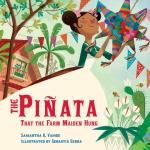 The Piñata That the Farm Maiden Hung by Samantha R. Vamos, illustrated by Sebastià Serra
The Piñata That the Farm Maiden Hung by Samantha R. Vamos, illustrated by Sebastià Serra
Source: Hardcopy courtesy of Charlesbridge. Thank you!
Publication: January 8, 2019 by Charlesbridge
Book Description:
It’s someone’s birthday. Feliz Cumpleaños!
A farm maiden enlists the help of her farm friends to build a piñata for a special celebration. Borrowing the style of “The House that Jack Built,” the story unfolds as each part of the piñata is gathered – each piece is introduced in English and then replaced by the Spanish word as more and more of the piñata is created. It’s a bilingual birthday bash from the boy who shaped the barro to the sorpresa at the end!
Back matter includes the lyrics to La Canción de la Piñata (The Piñata Song), instructions for how to make your own piñata, a glossary, and a list of Spanish translations.
“This is the piñata that the farm maiden hung.
This is the boy who shaped the clay to make the piñata that the farm maiden hung.
This is the horse that hauled the water…”
So begins The Piñata That the Farm Maiden Hung, written by Samantha R. Vamos and illustrated by Sebastià Serra. A companion to The Cazuela That the Farm Maiden Stirred, The Piñata That the Farm Maiden Hung embraces the style and rhythm of the popular nursery rhyme This Is the House That Jack Built, which has been successfully adapted in children’s literature multiple times. The Piñata That the Farm Maiden Hung is a unique bilingual (English-Spanish) telling of the story; one which features the accumulating preparations going into celebrating a young girl’s birthday.
In the very opening pages, we see a young girl, basket in hand, as she waves bye-bye to her friends and gathering of animals. From there, readers are treated to the steadily building, expanding, and rhythmic lines that all begins with “This is the piñata that the farm maiden hung”. Through Serra’s beautiful, multicoloured, sunny artwork and Vamos’ musical, singing text, the story takes readers on a swift and fun adventure. From the cat helping tear up pieces of paper, to the farmer making sculptures, to everyone pitching in help to help with decorations, it is a busy day for everyone involved in the birthday celebrations. There is a brief diversion in the story- a breather for our characters and a brief break in the accumulating poetry- allowing for some quiet excitement to grow before the final reveal of the piñata and the happy surprise! With key emphasized words in Spanish (all defined in the book’s glossary and presented first in English), this is a wonderful bilingual picture book/nursery rhyme adaptation to add to a collection, and one that is easily accessible to all readers. For readers familiar with and/or who enjoy This Is the House That Jack Built, or any fun iterations of it (e.g. The Cake That Mack Ate, This is the House That Monsters Built); readers who love energetic stories with repetition, reading or listening to poetry/stories in verse, The Piñata That the Farm Maiden Hung is a lovely, creative and memorable telling. Pairing your reading of The Piñata That the Farm Maiden Hung with its companion book, The Cazuela That the Farm Maiden Stirred, makes for an extra delightful two-part experience.
Bonus: The Piñata That the Farm Maiden Hung has multiple features for readers at the back of the book! Be sure to check out: the lyrics to La Canción de la Piñata/The Piñata Song; definitions of featured words in the book such as papel picado and cascarones; a “Glossary of Spanish Words”; and a detailed “Make Your Own Piñata!” guide.
I received a copy of this title courtesy of Charlesbridge in exchange for an honest review and for the purposes of this blog post. All opinions and comments are my own. Big thank you to author Samantha R. Vamos.
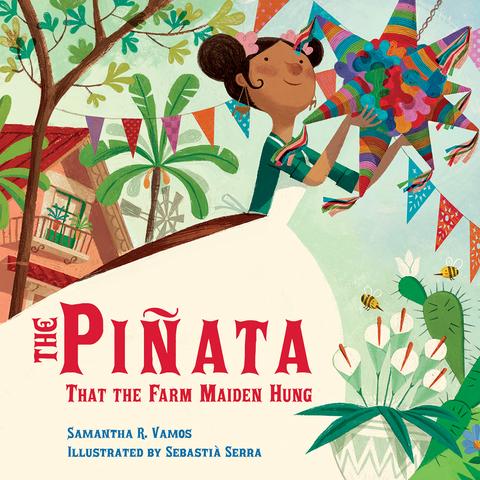

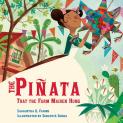
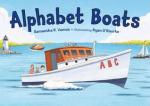
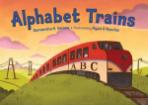
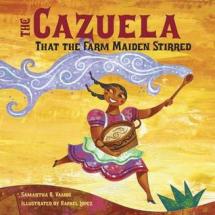
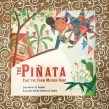
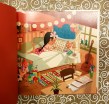
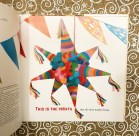

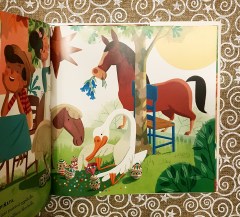
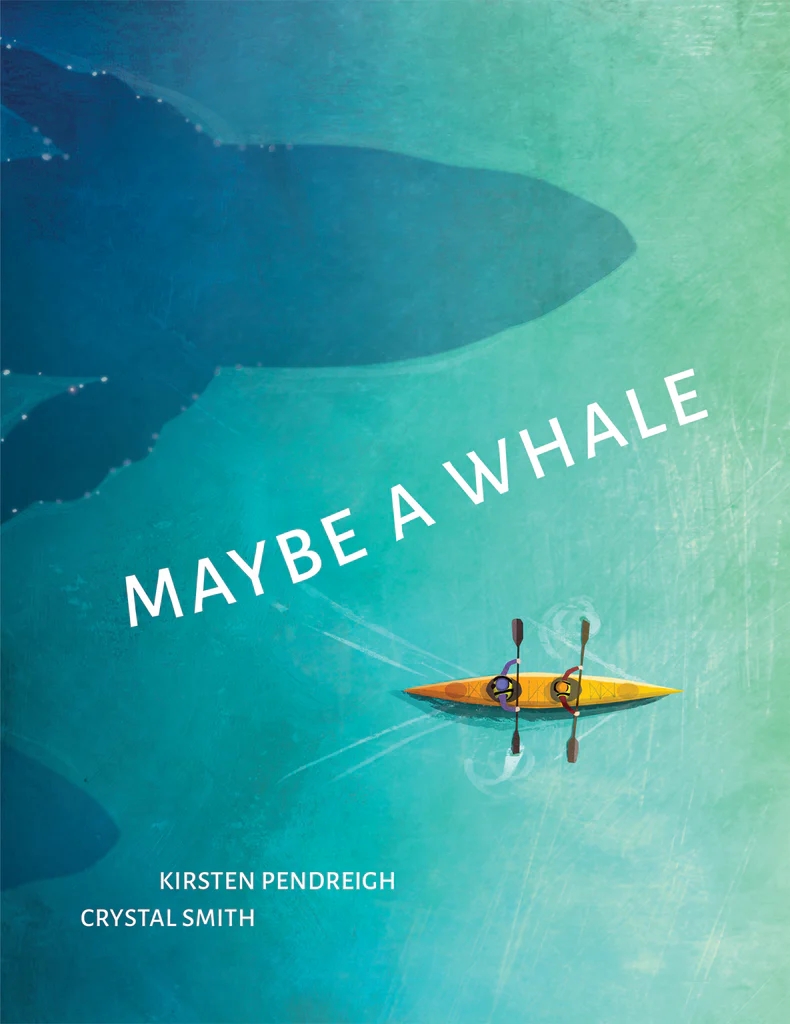
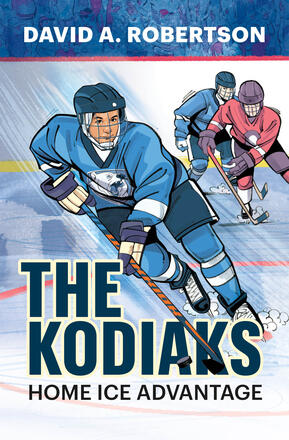
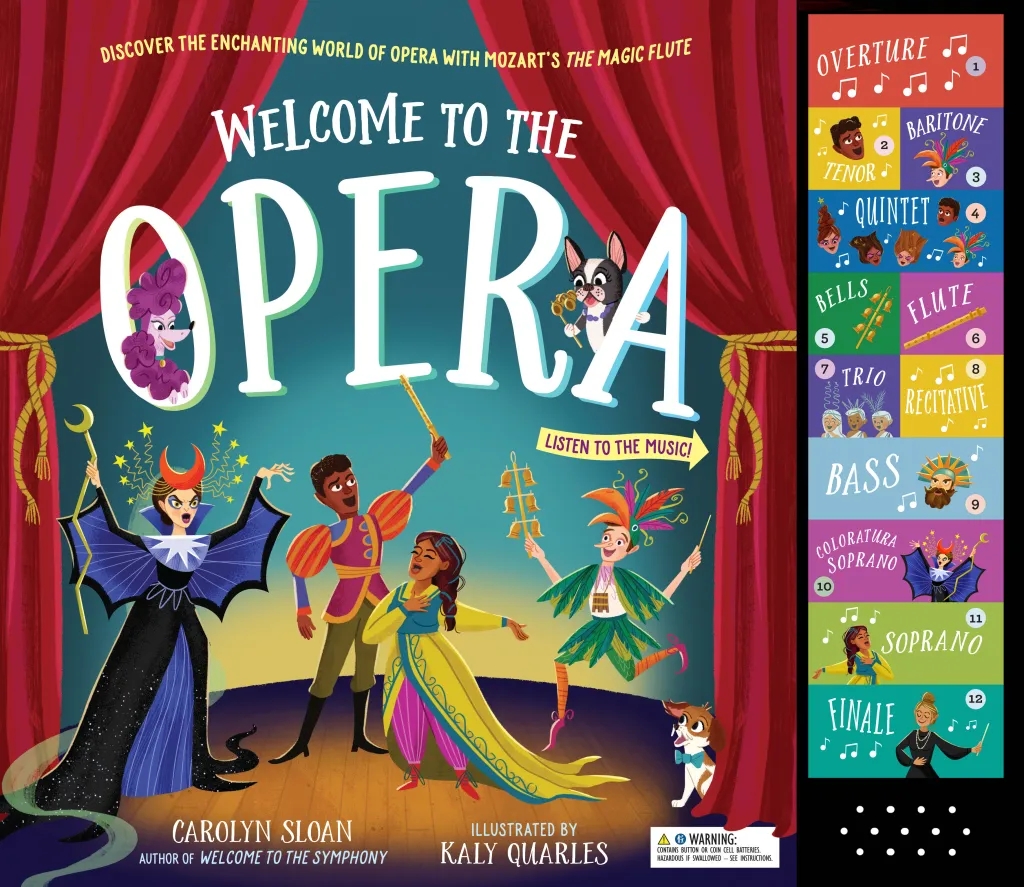
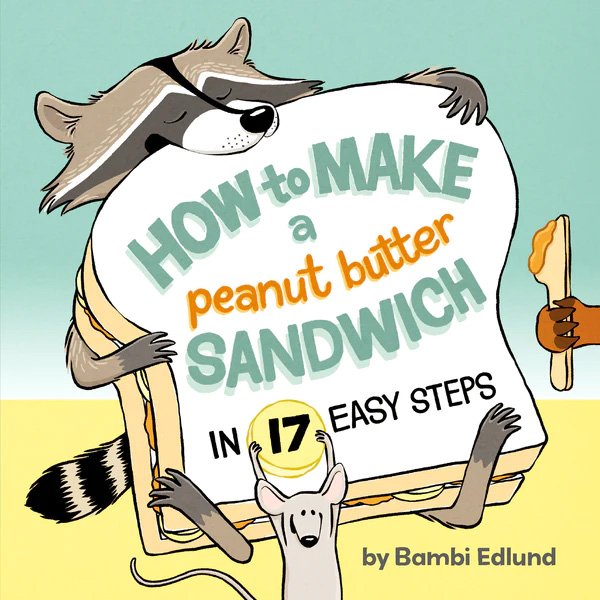
Leave a comment